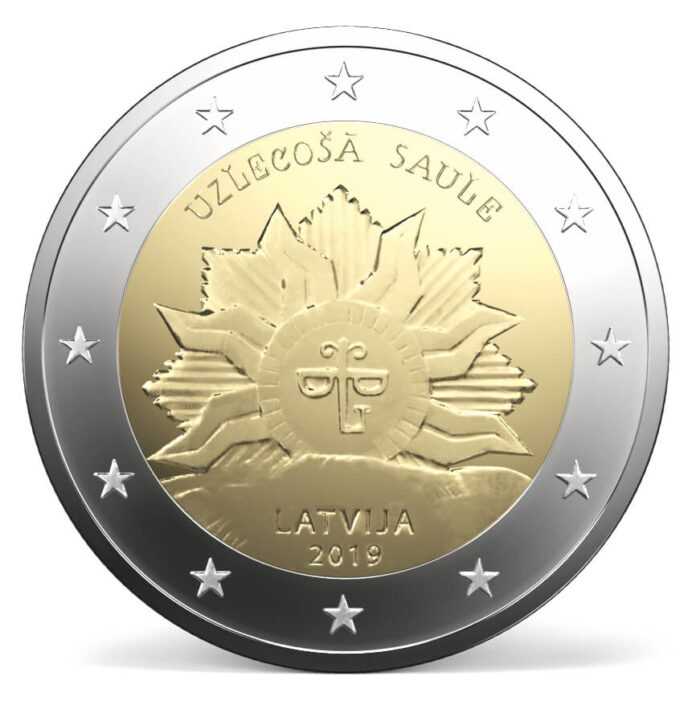
On 17 September 2019, Latvijas Banka issued a 2 euro commemorative coin “The Rising Sun” dedicated to the history of the Coat of Arms of Latvia. At the same time, by this coin shall be paid tribute to Ansis Cīrulis’ (1883–1942) artistic contribution that has been included in the Latvian Cultural Canon.

Description of the Coin
The national side of the commemorative coins issued by Latvijas Banka features the inscription “LATVIJA”, and the edge of the coin, like all other 2 euro circulation coins of the Republic of Latvia, features the inscription “DIEVS * SVĒTĪ * LATVIJU *”. The new 2 euro coin was struck by Koninklijke Nederlandse Munt (the Netherlands).
The graphic design and plaster model of the national side of the new commemorative coin has been created by artist Ivars Drulle, while the common side of the coin bearing the nominal value (artist Luc Luycx) is the same as that of other 2 euro circulation coins, including material and size.
Background of the Coin’s Motif
The motif of a rising sun was very popular at the time of the foundation of the Latvian state. The rising sun symbolised the new country. With the help of artist Ivars Drulle, the sun motif created by artist Ansis Cīrulis and emerging as one of the basic elements of the Coat of Arms of Latvia has reborn into the commemorative coin “The Rising Sun”.
In 1915, this motif was first featured on the badges of the Latvian Riflemen Battalion and on the flag of the 1st Daugavgrīva Latvian Riflemen Battalion. It was also part of the design proposal for the symbol of an autonomous Latvia, created by artist Ansis Cīrulis in 1917 (the land and a rising sun with broken sunbeams). Later on this motif emerged as one of the basic elements of the Coat of Arms of Latvia.
If you are interested in Latvian coins, you should also take a look at Latvia’s most recent collector coin, which we presented in a CoinsWeekly article. All commemorative coins issued by the Latvijas Banka can be seen on the bank’s website.
Latvia is not the only state using the sun as symbol. If you want to know more about the sun as part of coat of arms and flags, check this side of Wikipedia.



